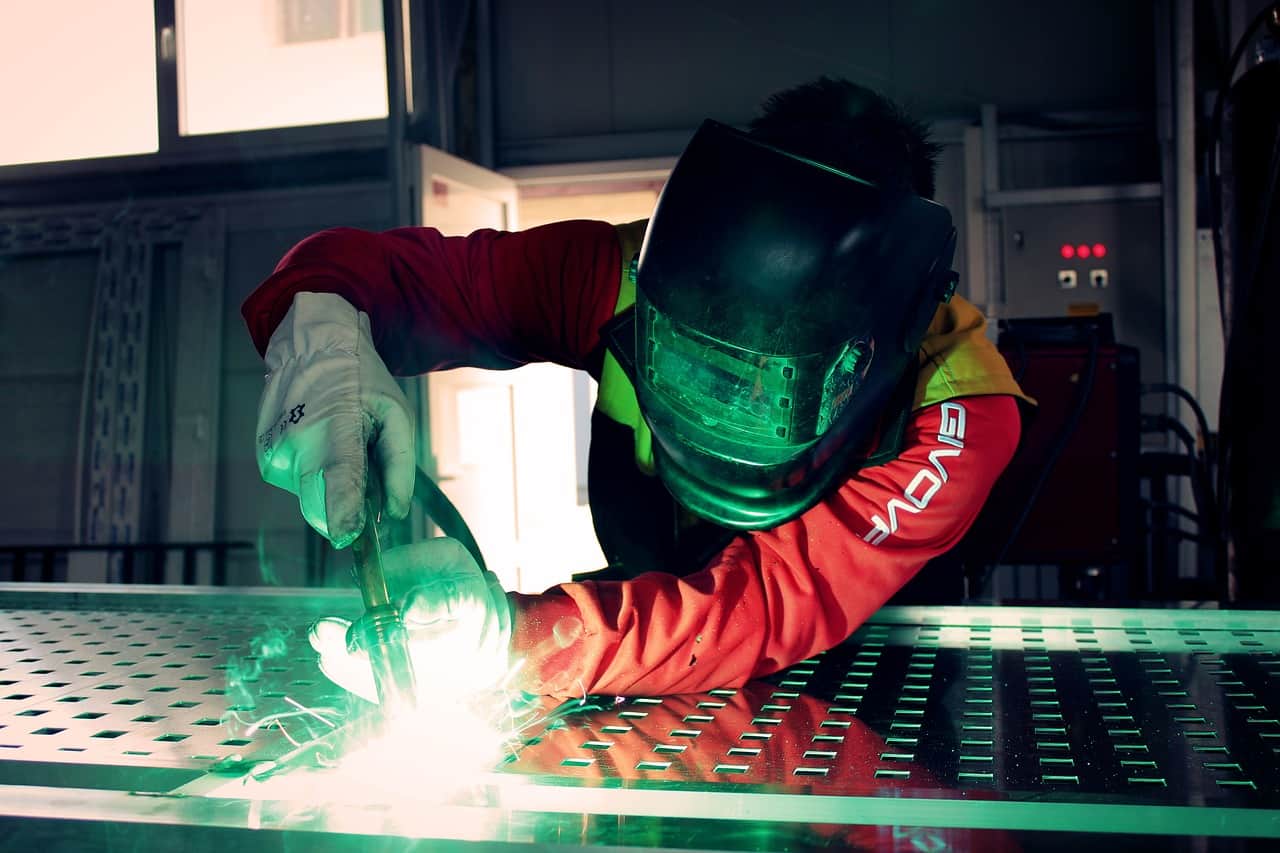A pinch point is “any point at which it is possible for a person or part of a person’s body to be caught between moving parts of a machine, or between the moving and stationary parts of a machine, or between material and any part of the machine,” according to OSHA. A pinch point can be located anywhere on a machine, including the point of operation. If any part of the worker’s body, typically hands or fingers, occupies that space during the pinching movement, there is a high probability of injury, such as fractures, amputations, contusions, lacerations or even death. Pinch-point hazard injuries can occur on a variety of different machine types, ranging from large hydraulic presses to small specialized machines, such as riveters and welders.
Personal Protective Equipment (PPE): Make sure you are always wearing your safety gear and inspect it before each use. Although the last line of defense against a pinch point injury, PPE (proper gloves, footwear) is a necessity to ensure others notice your position and your extremities are protected. Make sure clothing is properly fitted as to not get caught in machinery, moving parts, items that open/close, etc.
Properly block any equipment or parts where stored energy could be released. OSHA defines stored energy as hazardous energy sources including electrical, mechanical, hydraulic, pneumatic, chemical, thermal or other sources in machines and equipment that can be hazardous to workers. During the servicing and maintenance of machines and equipment, unexpected startup or release of stored energy could cause injury to employees.
Lockout-tagout procedures need to be put into place to control hazardous energy and prevent unexpected start up. Properly installed physical barriers or machine guards can help prevent workers from reaching into, through, over, under or around the pinch point.
We will be looking at “Good, Better, Best” approaches to safeguarding two machine types that present unavoidable pinch-point hazards – spot welders and pneumatic riveters. It is important to appreciate the magnitude of force between spot welding electrodes or riveting tips.
Spot welders require high forces between the moving electrodes ranging from a few hundred pounds to several thousand pounds. Because the force is concentrated on a small contact surface, the pounds per square foot can be extremely high. For example, a fairly typical electrode of 800 pounds with an electrode that has a ¼ inch diameter contact face will deliver 16,306 pounds per square foot. This is easily enough to severely crush or amputate a finger. Similarly, pneumatic riveting machines produce several thousand pounds of force concentrated on small-diameter mandrils. A typical rivet force of 2,000 pounds will deliver over 40,000 pounds per square inch.
Drop-probes provide economical, simple to understand and use, reliable protection for the operator. Drop-probe devices function by allowing a sensing probe to drop by gravity around the point-of-operation hazard of a riveter or welder prior to each intended machine cycle. The sensing probe cycle is initiated when the foot switch is pressed. If the sensing probe encounters the operator’s fingers and fails to drop past a preset position, the machine will not complete the cycle until the obstruction is cleared and the cycle is re-initiated.
The most unique and highly effective guarding device measures electrical continuity between the two electrodes to verify they are actually touching the part to be welded, or in the case of a riveter, continuity between the upper and lower mandrils. If anything, such as the operator’s finger, blocks the movement of the electrode, the system will not detect continuity. In other words, it must detect metal between the copper tips or riveting mandrils rather than a finger. When the foot pedal is closed, the electrodes are close under low force (50 pounds or less).
The continuity signal in a spot welder is picked up from wires on the welding transformer secondary pads, eliminating the need for wire connections at the electrodes. For riveters the sensing wires are connected to the frame of the rivet machine and the electrically-isolated lower tooling holder. In both cases the system will fail safe (lock out) if either of the pick-up wires is disconnected or if they are shorted together.
Pinch-point injuries are common and employers have an obligation to keep worker’s hands safe from pinch-point hazards. Task-based risk assessments are the critical first step in any safety evaluation and can identify hazards, such as pinch-point hazards. Risk-control factors, such as machine guarding, proper training and awareness of hand locations, and lockout tagout procedures, all help prevent pinch-point injuries. Devices, such as SOFT TOUCH, are the best method of safeguarding against pinch-point injuries as it features a 100% passive, fail safe method of detecting continuity.
For more information and enhance your company’s fall protection program this spring and summer contact HURT-511 and our personal injury lawyers help injured workers recover the benefits to which they are entitled by law. For a free consultation with an experienced workers’ compensation lawyer, call us toll-free at 800-4878-511 or complete our online form. Our firm handles accident and injury claims throughout all five boroughs of New York.
HURT-511 operates in all boroughs of New York including all Bronx neighborhoods, namely: Bedford Park, Belmont, Fordham, Highbridge, Hunts Point, Jerome Park, Kingsbridge, Morris Park, Morrisania, Mott Haven, Parkchester, Riverdale, Spuyten Duyvil, Throgs Neck, University Heights and Woodlawn.





 Trusted Reviews
Trusted Reviews



